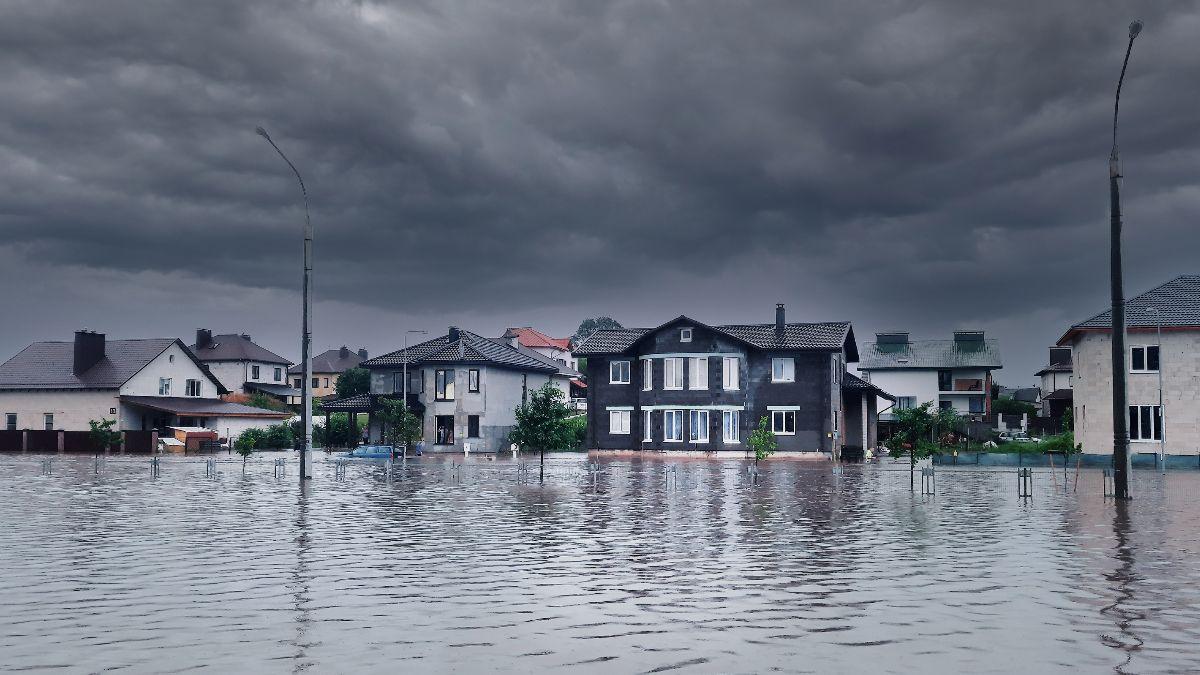BY: Steve Bonday, CIC, CBIA, AIP
Insurance Sales Executive
sbonday@bankersinsurance.net
Flood insurance is not covered by standard homeowners policies. If you’ve been a client of ours (Bankers Insurance) for long, you’ve no doubt heard this before but the point bears repeating. We regularly speak with clients who believe they have coverage under their homeowners policy for damage caused by flood. Rising water from too much rain? Not covered. River or creek overflows its banks? Not covered. Storm surge due to a surprise weather system? Not covered. The good news is flood coverage for homes is available through a separate flood insurance policy, but even this protection has limitations and restrictions. Let’s review what is considered a “flood”, how to protect against such an event, and the restrictions of flood insurance policies.
Definition Of a Flood
Insurance companies define a flood as an inundation of water upon land that is normally dry. That includes the major events most of us envision when we hear the word “flood”. However, it also includes several minor events such as those previously mentioned. Even more, each one of the following would be considered a flood by an insurance company and not covered by a standard homeowners policy.
“Flood” Includes:
- Too much rain accumulation, resulting in a flooded basement or garage.
- Rapid winter melt, causing a nearby river to overflow its banks.
- Failure of a dam or levy.
- Abnormally high tide due to an offshore weather system.
- Storm surge caused by a hurricane.
Note: wind damage caused by a hurricane is a protection normally covered on homeowners insurance (or a wind policy for some of our coastal clients), but any related storm surge is a flood. This is important because it means hurricanes and similar events bring the risk of both wind and flood, and the two are protected under different policies. - A nearby construction project causes an unexpected diversion of rainwater.
Homes do not need to be in a flood plain to experience a flood claim. In fact, FEMA reports that more than 25% of flood claims arise outside of high-risk areas. And that is only claims received – much more uninsured flood damage occurs in these “safe” areas. In fact, one of our strangest flood claims was in a low-risk area. A water main broke and before authorities could get it turned off, water inundated the street and damaged several homes. This damage was not covered by homeowners insurance.
Types of Flood Insurance
Flood insurance is available through the National Flood Insurance Program (NFIP) and certain private flood insurance companies.
NFIP Coverage
The National Flood Insurance Program is managed by the federal government. For many years it was the only flood insurance available to most, and even today is the standard against which all other flood insurance policies are compared. However, it contains limitations which may leave coverage gaps of which homeowners should be aware.
Coverage Limits
NFIP policies provide up to $250,000 for the home and up to $100,000 for contents. If more than $250,000 coverage is needed, a separate excess flood policy can be purchased. An excess flood policy is available up to almost any limit. Mortgage holders rarely require it, but it is still smart to purchase to cover the gap between the base $250,000 limit and the replacement cost of the home. For example, if a $350,000 home is destroyed by a storm surge and the owner only carried a base policy with $250,000 of flood insurance, they could still owe the bank $100,000 and not have a home.
Primary Versus Secondary Home
For a primary home, an NFIP flood insurance policy pays the replacement cost for flood damage to the house and the actual cash value for any contents. For a secondary home, it pays actual cash value for both. Actual cash value is reduced by depreciation and is therefore less than replacement cost.
Not Covered
The following items are not covered by an NFIP flood insurance policy.
- Other buildings or structures on the property
- Property outside the home, such as fences, decks, patios, septic systems, or swimming pools. Even if a home is elevated and the only means of access is by an outside stairway, decks are not covered.
- Docks, bulkheads, retaining walls, or piers.
- Loss of rental income or other loss of use related to the home
- Additional living expenses, such as temporary rental cost while the home is being repaired
- Earth movement, even if caused by the flood. This includes landslide, earthquake, subsidence, and sinkholes.
Private Flood Insurance – NFIP Alternatives
Over the last decade, many private flood insurance companies began offering flood insurance. And although the coverages provided by many of these companies are similar to those offered by the NFIP, they are more flexible. For example, they may provide $1,000,000 or more of coverage for the home, negating the need to have a base plus excess policy. They may offer loss of rental income, or replacement cost valuation on contents, or more than the $100,000 NFIP contents limit. Pricing is another consideration. Depending upon circumstances and insurance company, pricing may be lower or higher. Like any other type of insurance, the only way to know best is to speak to your insurance agent and request a quote.
Questions on flood insurance? Contact your Bankers Insurance agent. We will help determine your risks and advise how to best cover them. Not a client of ours? Let us earn your business! Each of our clients is assigned a personal insurance agent and provided their email address as well as a phone number that rings right on their desk.
original article: https://www.bankersinsurance.net/2022/12/14/the-limitations-of-flood-insurance-nfip-policy-restrictions/





